
Asakusa: The Heartbeat of Traditional Tokyo
Discover the timeless charm of Asakusa, Tokyo's historic gem, where ancient traditions meet modern vibrancy amidst temples, markets, and scenic river views.
Asakusa is a captivating neighbourhood that offers a glimpse into Tokyo’s storied past while seamlessly blending in modern attractions. At its heart is the majestic Senso-ji Temple, Tokyo's oldest and most significant Buddhist temple, which draws millions of visitors every year. Flanked by the vibrant Nakamise Shopping Street, this historic site is surrounded by shops selling traditional snacks, souvenirs, and crafts, making it a paradise for those looking to immerse themselves in Japanese culture. While Senso-ji is the main draw, Asakusa is also home to a variety of other noteworthy attractions. The Sumida River, which runs alongside the neighbourhood, offers scenic boat rides that provide a unique perspective of Tokyo’s skyline. Nearby, the Asakusa Culture and Tourist Information Center offers panoramic views of the area from its observation deck. For a taste of old Tokyo, visitors can explore the winding streets lined with traditional wooden houses and quaint eateries. Asakusa also hosts numerous festivals throughout the year, such as the Sanja Matsuri, which showcases vibrant parades and traditional performances. Whether you are a history buff, a foodie, or simply someone looking to experience the essence of Japan, Asakusa has something to offer everyone.
Local tips in Asakusa
- Visit the Senso-ji Temple early in the morning to avoid crowds and enjoy a peaceful atmosphere.
- Try local street food such as taiyaki (fish-shaped cake) and ningyo-yaki (doll-shaped pastries) at Nakamise Street.
- Take a rickshaw ride to explore Asakusa’s hidden gems and learn about its history from a knowledgeable guide.
- Check out the Asakusa Culture and Tourist Information Center for free maps, brochures, and a stunning view from the observation deck.
- Plan your visit around one of Asakusa's many festivals for a truly immersive cultural experience.
Asakusa: The Heartbeat of Traditional Tokyo
Asakusa is a captivating neighbourhood that offers a glimpse into Tokyo’s storied past while seamlessly blending in modern attractions. At its heart is the majestic Senso-ji Temple, Tokyo's oldest and most significant Buddhist temple, which draws millions of visitors every year. Flanked by the vibrant Nakamise Shopping Street, this historic site is surrounded by shops selling traditional snacks, souvenirs, and crafts, making it a paradise for those looking to immerse themselves in Japanese culture. While Senso-ji is the main draw, Asakusa is also home to a variety of other noteworthy attractions. The Sumida River, which runs alongside the neighbourhood, offers scenic boat rides that provide a unique perspective of Tokyo’s skyline. Nearby, the Asakusa Culture and Tourist Information Center offers panoramic views of the area from its observation deck. For a taste of old Tokyo, visitors can explore the winding streets lined with traditional wooden houses and quaint eateries. Asakusa also hosts numerous festivals throughout the year, such as the Sanja Matsuri, which showcases vibrant parades and traditional performances. Whether you are a history buff, a foodie, or simply someone looking to experience the essence of Japan, Asakusa has something to offer everyone.
Iconic landmarks you can’t miss
Sensō-ji
Explore Sensō-ji, Tokyo's oldest Buddhist temple, where history, spirituality, and vibrant culture converge in the heart of Asakusa.

Kaminarimon
Explore Kaminarimon, the iconic Thunder Gate to Senso-ji Temple, a symbol of Tokyo's vibrant culture and rich history.
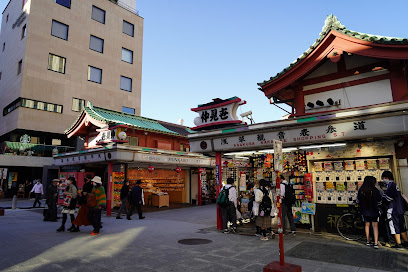
Nakamise-dori Street
Explore Nakamise-dori Street in Asakusa for a taste of tradition, local crafts, and delicious snacks, all leading to the iconic Senso-ji Temple.
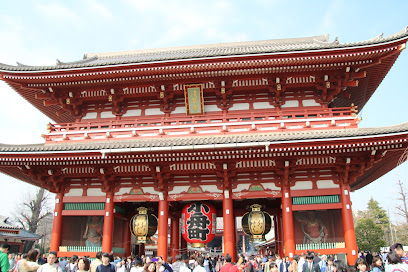
Asakusa Shrine
Discover the tranquil beauty and rich heritage of Asakusa Shrine in Tokyo, a serene Shinto shrine amidst the city's vibrant culture.
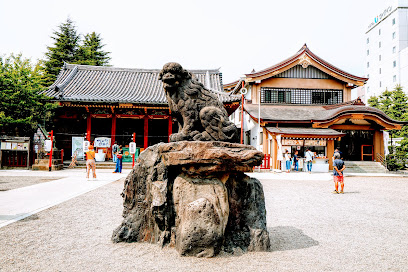
Hōzōmon Gate
Explore the stunning Hōzōmon Gate, an iconic entrance to Senso-ji Temple in Tokyo, rich in history and vibrant culture.
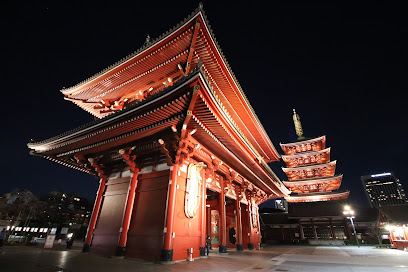
Kan'non-dōri
Discover the energetic charm of Kan'non-dōri, where traditional culture and modern shopping blend seamlessly in the heart of Asakusa, Tokyo.

Ryōunkaku Memorial Marker
Discover the Ryōunkaku Memorial Marker in Asakusa, Tokyo, and explore Japan's rich architectural heritage from the Meiji era.

Stars Plaza
Discover the vibrant Stars Plaza in Asakusa, Tokyo—a cultural hotspot filled with entertainment, local events, and the essence of Japanese heritage.
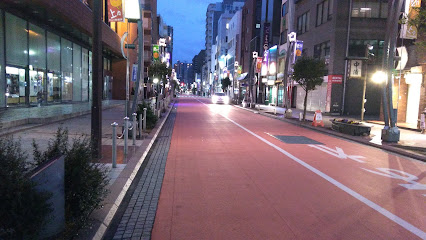
Nippon-Daemon
Discover the vibrant essence of Japanese culture at Nippon-Daemon, where tradition meets artistry in the heart of Asakusa, Tokyo.

Akaboshi Juzaburo Statue
Discover the Akaboshi Juzaburo Statue in Asakusa, Tokyo, a stunning tribute to Japanese culture and a must-visit for every traveler seeking history and beauty.
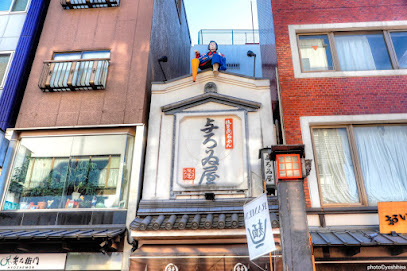
Unmissable attractions to see
Tokyo Skytree
Discover the breathtaking views and vibrant culture at Tokyo Skytree, Japan's tallest structure and a must-visit attraction for travelers.
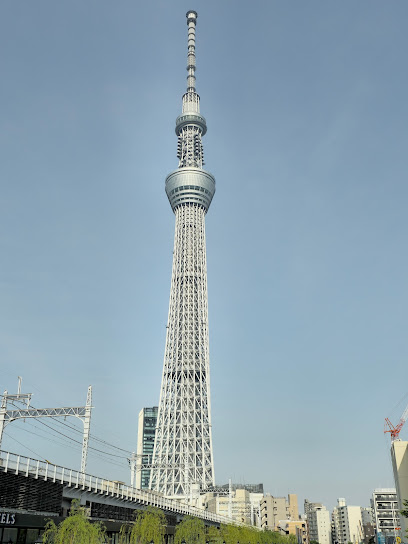
Sensō-ji
Explore the cultural heart of Tokyo at Sensō-ji Temple, an ancient Buddhist sanctuary renowned for its stunning architecture and vibrant atmosphere.

Kaminarimon
Explore Kaminarimon, the iconic Thunder Gate of Senso-ji Temple, a perfect blend of history and vibrant culture in the heart of Tokyo's Asakusa district.
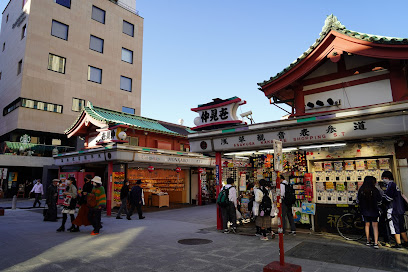
Nakamise-dori Street
Discover the charm of Nakamise-dori Street in Asakusa, Tokyo – a vibrant market steeped in tradition and filled with unique Japanese delights.
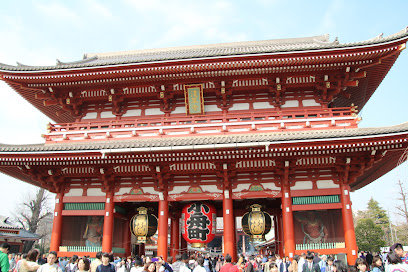
Asakusa Hanayashiki
Experience the magic of Asakusa Hanayashiki, Japan's oldest amusement park, where tradition meets thrill in the heart of Tokyo.
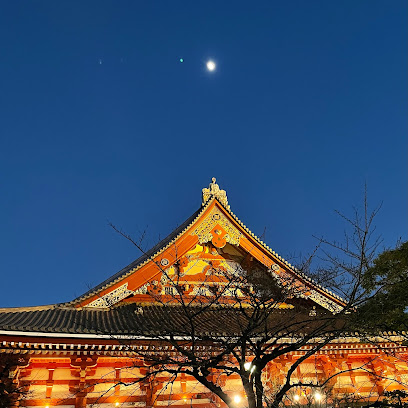
Asakusa Shrine
Explore the tranquil Asakusa Shrine, a historic Shinto shrine in Tokyo, offering a unique blend of spirituality and culture amidst the city's vibrant atmosphere.
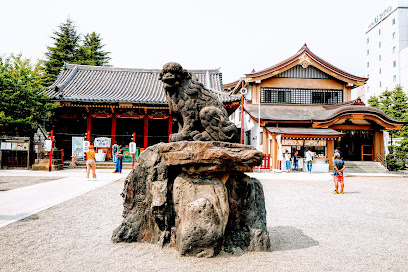
SAMURAI NINJA MUSEUM TOKYO 侍 ミュージアム
Unleash your inner warrior at Tokyo's Samurai Ninja Museum, a unique cultural experience showcasing the history and artistry of Japan's legendary fighters.
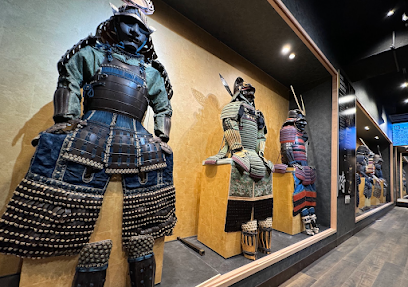
Asakusa Culture Tourist Information Center
Explore the heart of Tokyo at the Asakusa Culture Tourist Information Center, your essential guide to the cultural treasures of Asakusa.
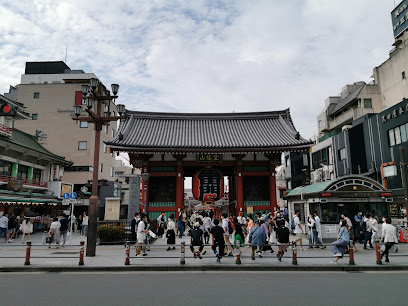
Hōzōmon Gate
Explore the iconic Hōzōmon Gate, the grand entrance to Senso-ji Temple, a historical landmark in Asakusa, Tokyo, rich in culture and breathtaking architecture.
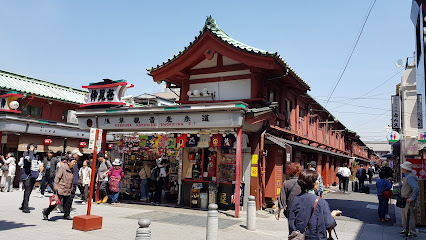
Kan'non-dōri
Discover the vibrant Kan'non-dōri in Asakusa, Tokyo, where tradition meets modernity in a bustling street filled with culture, shopping, and culinary delights.
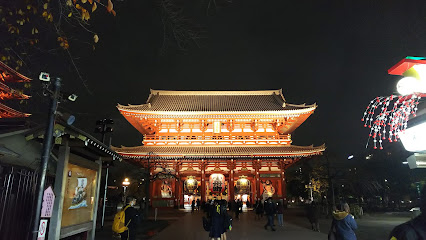
Essential places to dine
LaVASARA CAFE&GRILL
Experience authentic Italian cuisine at LaVASARA CAFE&GRILL in Asakusa, Tokyo - where great food meets warm hospitality.
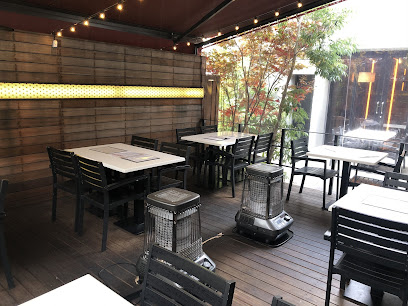
Asakusa Imahan
Experience authentic Japanese cuisine at Asakusa Imahan – where sukiyaki dreams come true in Tokyo's vibrant culinary scene.
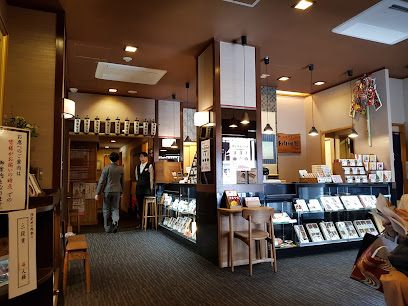
Sometarō
Experience authentic okonomiyaki at Sometarō in Taito City—where flavor meets tradition in every savory bite.

Asakusa Sushi Ken
Explore the flavors of Japan at Asakusa Sushi Ken – where traditional sushi meets creative cuisine in Tokyo's historic district.
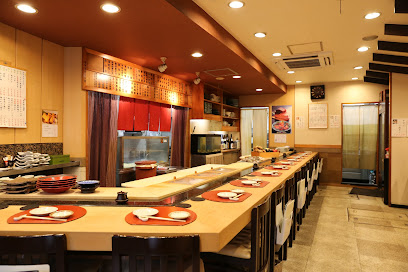
Ninja Experience Cafe Asakusa
Discover an enchanting blend of dining and entertainment at Ninja Experience Cafe Asakusa—where ninjas come alive!
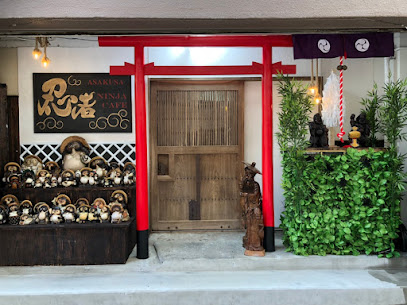
San-Sada
Delve into the exquisite world of tempura at San-Sada in Asakusa - where tradition meets modern culinary artistry.
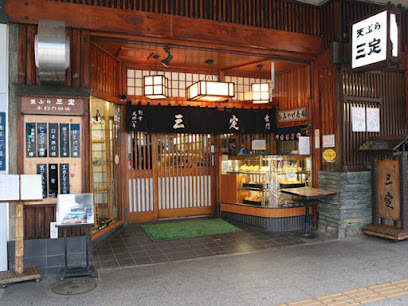
Gyoza Bar Keisuke
Savor authentic Japanese dumplings at Gyoza Bar Keisuke in Asakusa - a culinary gem for food enthusiasts and travelers alike.
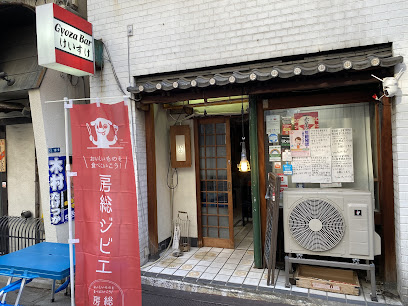
Kura
Discover authentic Japanese flavors at Kura in Asakusa - your go-to destination for sukiyaki and yakiniku delights.

Kudaka Tepannyaki Asakusa
Savor authentic teppanyaki delights at Kudaka Teppanyaki Asakusa - where culinary artistry meets unforgettable dining experiences.
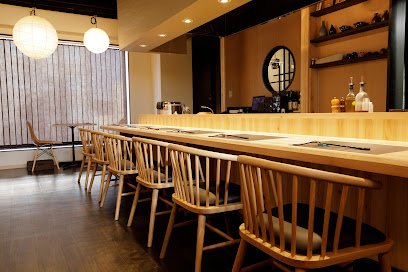
Asakusa kanna
Experience innovative Japanese cuisine at Asakusa Kanna – where tradition meets creativity in the heart of Tokyo.
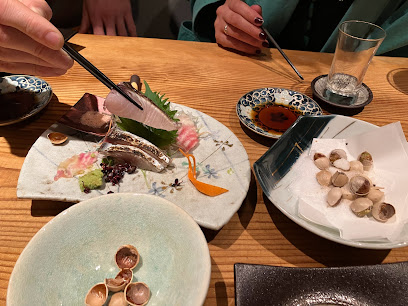
Markets, malls and hidden boutiques
Nakamise-dori Street
Discover the rich history and vibrant culture of Nakamise-dori Street, a bustling market leading to Tokyo's iconic Senso-ji Temple.

Marugoto Nippon
Explore Marugoto Nippon in Asakusa for a unique Japanese souvenir shopping experience, embracing tradition and modernity in every item.
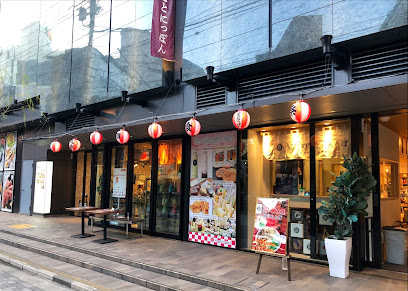
Sanrio Gift Gate Asakusa
Explore the enchanting Sanrio Gift Gate in Asakusa, a must-visit haven for Hello Kitty fans filled with unique gifts and toys.

Tokyo Hotarudō
Discover the charm of Japan's rich history at Tokyo Hotarudō, a delightful antique store brimming with timeless treasures and unique souvenirs.

Asakusa Sparkle
Discover unique T-shirts and souvenirs in Asakusa Sparkle, a vibrant store that captures the essence of Tokyo's culture and style.

Minoriya
Discover Minoriya in Asakusa, Tokyo, your go-to destination for authentic Japanese souvenirs that beautifully embody the culture and artistry of Japan.
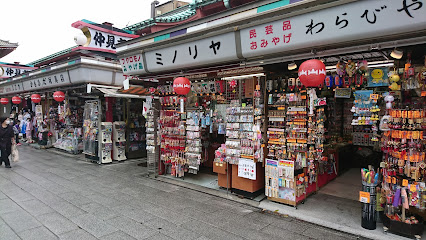
Asakusa Haneda
Explore Asakusa Haneda: A Must-Visit Souvenir Store in Tokyo with Unique Japanese Crafts and Gifts.
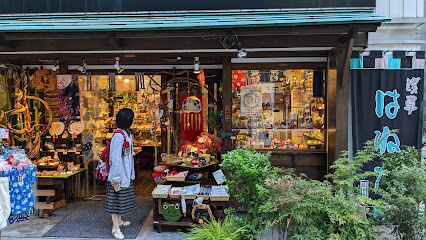
Asakusa Tatsumiya
Explore Asakusa Tatsumiya, the ultimate gift shop in Tokyo's historic heart, offering unique souvenirs and local crafts to cherish your journey.

SUZUYA
Discover unique Japanese souvenirs at Suzuya in Asakusa, where tradition meets modernity in a charming shopping experience.

Kaminarimon Gate Fukuko-ya
Discover unique Japanese souvenirs at Kaminarimon Gate Fukuko-ya, a delightful shop in the historic Asakusa district of Tokyo.
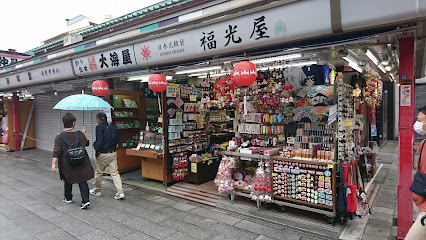
Essential bars & hidden hideouts
NinjaBar
Discover the enchanting NinjaBar in Tokyo's Asakusa, where immersive ninja-themed experiences meet delicious drinks and lively entertainment.
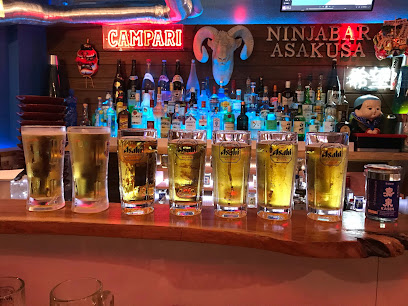
Nemo
Experience the vibrant nightlife of Tokyo at Nemo, where expertly crafted cocktails meet a warm and inviting atmosphere in Asakusa.
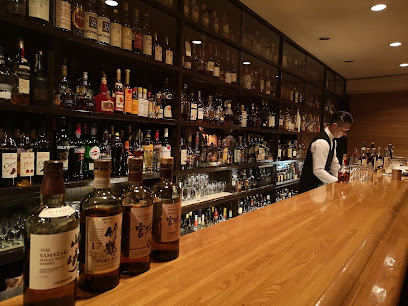
Samboa Bar
Discover the vibrant atmosphere of Samboa Bar in Asakusa, Tokyo, offering a unique cocktail experience and a taste of local nightlife.
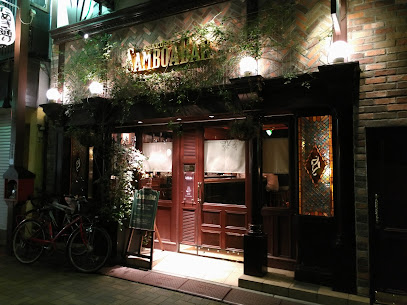
ORANGE-ROOM ASAKUSA
Experience the lively atmosphere and modern izakaya delights at ORANGE-ROOM ASAKUSA, a top spot for nightlife in Tokyo's historic district.
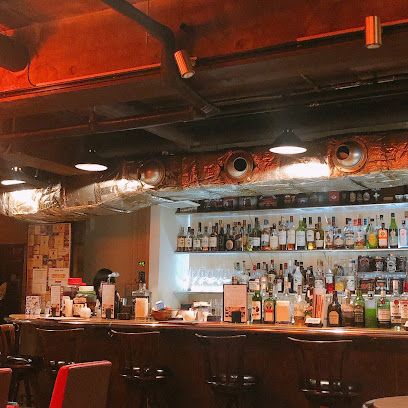
A.S.A.B.(as soon as beerable)
Experience the vibrant nightlife of Tokyo at A.S.A.B., a cozy bar in Asakusa offering affordable drinks and a friendly atmosphere.
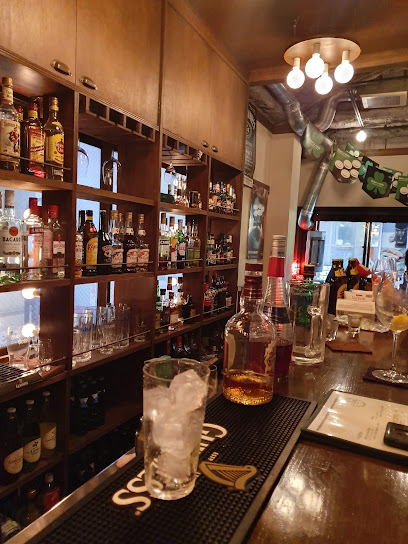
BAR WALK
Discover the cozy charm of Bar Walk in Asakusa, Tokyo, where unique cocktails and a friendly atmosphere await every visitor.
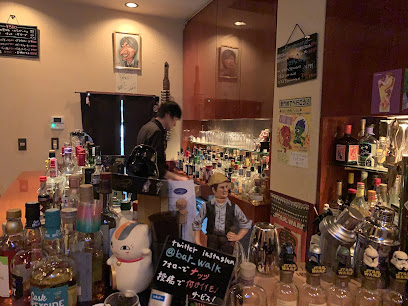
FOS
Experience the vibrant nightlife of Asakusa at FOS, a stylish bar serving delicious drinks and a lively atmosphere.

Barley Asakusa
Discover Barley Asakusa, a delightful cocktail bar in Taito City, Tokyo, offering unique drinks and a vibrant atmosphere for nightlife enthusiasts.
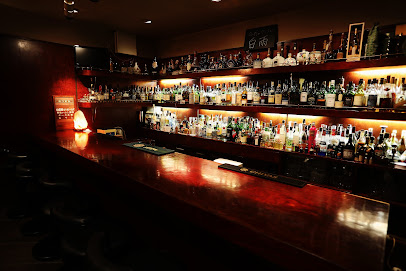
Wolf Bar Asakusa
Discover the vibrant nightlife of Tokyo at Wolf Bar Asakusa, where expertly crafted cocktails meet a lively atmosphere in the heart of the city.
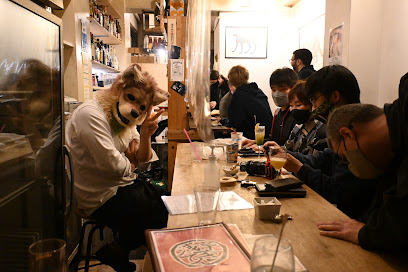
中むらや浅草近Bar
Discover the essence of Japanese nightlife at 中むらや浅草近Bar, where tradition meets modernity in the heart of Asakusa.
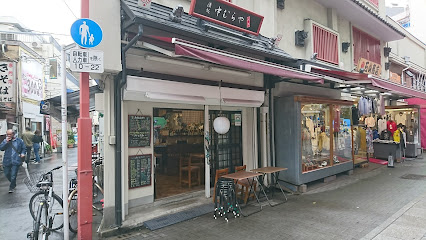
Local Phrases
-
- Helloこんにちは
[Konnichiwa] - Goodbyeさようなら
[Sayonara] - Yesはい
[Hai] - Noいいえ
[Iie] - Please/You're welcomeどうぞ
[Douzo] - Thank youありがとう
[Arigatou] - Excuse me/Sorryすみません
[Sumimasen] - How are you?お元気ですか?
[Ogenki desu ka?] - Fine. And you?元気です。あなたは?
[Genki desu. Anata wa?] - Do you speak English?英語を話せますか?
[Eigo o hanasemasu ka?] - I don't understandわかりません
[Wakarimasen]
- Helloこんにちは
-
- I'd like to see the menu, pleaseメニューを見せていただきたいのですが
[Menyuu o misete itadakitai no desu ga] - I don't eat meat肉は食べません
[Niku wa tabemasen] - Cheers!乾杯!
[Kanpai!] - I would like to pay, pleaseお会計をお願いします
[Okaikei o onegaishimasu]
- I'd like to see the menu, pleaseメニューを見せていただきたいのですが
-
- Help!助けて!
[Tasukete!] - Go away!行ってください!
[Itte kudasai!] - Call the Police!警察を呼んでください!
[Keisatsu o yonde kudasai!] - Call a doctor!医者を呼んでください!
[Isha o yonde kudasai!] - I'm lost道に迷っています
[Michi ni mayotte imasu] - I'm ill具合が悪いです
[Guai ga warui desu]
- Help!助けて!
-
- I'd like to buy...買いたいです
[Kaitai desu] - I'm just looking見てるだけです
[Miteru dake desu] - How much is it?いくらですか?
[Ikura desu ka?] - That's too expensiveそれは高すぎます
[Sore wa takasugimasu] - Can you lower the price?値段を下げていただけますか?
[Nedan o sagete itadakemasu ka?]
- I'd like to buy...買いたいです
-
- What time is it?今何時ですか?
[Ima nanji desu ka?] - It's one o'clock一時です
[Ichi-ji desu] - Half past (10)10時半
[Juu-ji han] - Morning朝
[Asa] - Afternoon午後
[Gogo] - Evening夜
[Yoru] - Yesterday昨日
[Kinou] - Today今日
[Kyou] - Tomorrow明日
[Ashita] - 1一
[Ichi] - 2二
[Ni] - 3三
[San] - 4四
[Shi] - 5五
[Go] - 6六
[Roku] - 7七
[Nana] - 8八
[Hachi] - 9九
[Kyu] - 10十
[Juu]
- What time is it?今何時ですか?
-
- Where's a/the...?…はどこですか?
[... wa doko desu ka?] - What's the address?住所は何ですか?
[Jusho wa nan desu ka?] - Can you show me (on the map)?地図で見せていただけますか?
[Chizu de misete itadakemasu ka?] - When's the next (bus)?次の(バス)はいつですか?
[Tsugi no (basu) wa itsu desu ka?] - A ticket (to ....)(…)のチケットをください
[(...) no chiketto o kudasai]
- Where's a/the...?…はどこですか?
History of Asakusa
-
Asakusa's history dates back to the Edo period (1603-1868) when it was a flourishing entertainment district. The area became known for its vibrant culture, including kabuki theaters, traditional shops, and geisha houses, attracting both locals and visitors. The establishment of Senso-ji, Tokyo's oldest temple, in 628 AD marked a significant turning point, as it became a focal point for pilgrims and tourists alike.
-
Senso-ji Temple, dedicated to the Buddhist goddess Kannon, has been a pivotal religious site since its founding. The temple's iconic Kaminarimon Gate, built in 942 AD, serves as a grand entrance to the temple grounds. The temple's architecture and festivals symbolize the rich spiritual heritage of the Asakusa area, drawing millions of visitors yearly.
-
During the Edo period, Asakusa became synonymous with entertainment, with the establishment of the Yoshiwara district, renowned for its pleasure quarters. The area was also home to popular festivals, such as the Sanja Matsuri, which celebrates the founding of Senso-ji and continues to be a vibrant part of Asakusa's cultural identity today.
-
The Meiji era (1868-1912) brought significant changes to Asakusa, as Japan underwent rapid modernization. The Taisho era (1912-1926) saw the introduction of Western culture, which influenced the arts and entertainment available in Asakusa. The area became famous for its theaters, including the Asakusa Opera, and new forms of entertainment like cinema emerged.
-
After World War II, Asakusa faced destruction but demonstrated resilience in rebuilding its cultural landmarks. The 1950s and 1960s saw the revival of traditional festivals and the preservation of Senso-ji. The area became a symbol of cultural continuity amidst Japan's rapid post-war development, maintaining its status as a tourist destination.
-
Today, Asakusa is a vibrant neighborhood where traditional culture coexists with modern influences. Visitors can explore the historic streets, enjoy local cuisine, and participate in festivals while appreciating contemporary attractions like Tokyo Skytree. Asakusa remains a testament to Tokyo's rich history, showcasing the enduring legacy of its past.
Asakusa Essentials
-
Asakusa is easily accessible from various neighborhoods in Tokyo. The area is served by the Tokyo Metro Ginza Line and the Toei Asakusa Line. From Shibuya, you can take the Ginza Line directly to Asakusa, which takes about 30 minutes. From Shinjuku, take the Toei Shinjuku Line to Bakuroyokoyama Station, then transfer to the Toei Asakusa Line. Alternatively, the JR Yamanote Line can take you to Ueno Station, from which you can take the Tokyo Metro Ginza Line to Asakusa.
-
Asakusa is best explored on foot, as many of its attractions are within walking distance of each other. The area is also served by several bus routes and is bicycle-friendly, with rental shops available. For those who prefer public transport, the Toei Bus network connects Asakusa to surrounding neighborhoods, while the Tokyo Metro and Toei Subway systems provide easy access to other parts of the city.
-
Asakusa is generally a safe neighborhood for tourists. However, like in any major city, it is advisable to stay vigilant, especially in crowded areas. Petty crimes such as pickpocketing can occur, particularly near popular attractions like Senso-ji Temple. It is best to avoid poorly lit streets at night and keep an eye on personal belongings.
-
In case of emergency, dial 110 for police assistance or 119 for fire and medical emergencies. The nearest hospital is the Asakusa Hospital, located a short distance from Senso-ji Temple. It is advisable to have travel insurance that covers medical emergencies, and pharmacies are available throughout Asakusa for minor health issues.
-
Fashion: Do dress modestly when visiting religious sites. Avoid wearing revealing or inappropriate clothing. Religion: Do respect local customs; when entering temples, remove your shoes and refrain from taking photos in restricted areas. Public Transport: Do be courteous; offer your seat to the elderly or those in need. Don't eat or drink on public transport. Greetings: Do greet locals with a bow and a smile; it's a sign of respect. Eating & Drinking: Do try local specialties like melon bread and tempura. Don't waste food, as it is considered disrespectful.
-
To experience Asakusa like a local, visit the traditional street markets such as Nakamise Street for snacks and souvenirs. Engage in a rickshaw ride for a unique view of the area and its history. Check local schedules for traditional festivals, such as the Sanja Matsuri in May. For a quieter experience, visit the lesser-known temples around Asakusa, such as the Imado Shrine, which is dedicated to matchmaking.
Nearby Cities to Asakusa
-
Things To Do in Nagoya
-
Things To Do in Kanazawa
-
Things To Do in Kyoto
-
Things To Do in Nara
-
Things To Do in Osaka
-
Things To Do in Hiroshima
-
Things To Do in Sapporo
-
Things To Do in Fukuoka
-
Things To Do in Pohang
-
Things To Do in Gyeongju
-
Things To Do in Ulsan
-
Things To Do in Busan
-
Things To Do in Andong
-
Things To Do in Daegu
-
Things To Do in Chuncheon











